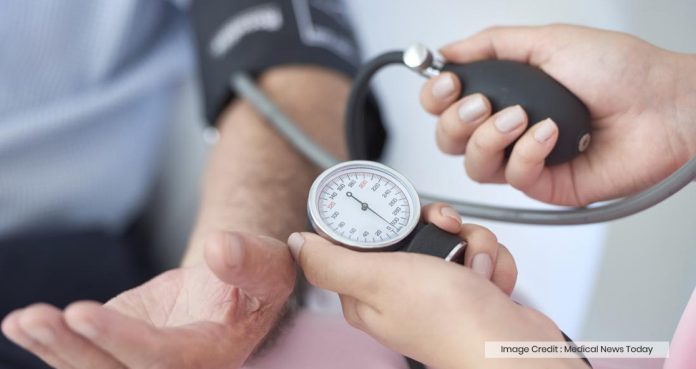Both of your high systolic and high diastolic blood pressure readings are equally important to predict heart disease, which can lead to heart attack and stroke, according to new research.
Worldwide, heart disease and stroke are the leading causes of death.
Every year, over 600,000 people die of heart disease in the United States. According to the CDC, one-quarter of deaths caused by cardiovascular disease are preventable.
Your blood pressure readings are essential for monitoring and analyzing blood pressure in order to predict the risk of cardiovascular disease. Your blood pressure is measured in terms of systolic and diastolic blood pressure. It is imperative to understand both systolic and diastolic blood pressure numbers to control your blood pressure.
According to the American Heart Association (AHA), the blood pressure below 120/80 mm Hg (mercury) is considered normal.
The systolic blood pressure is the pressure the blood puts on the arteries when your heart beats and the diastolic blood pressure is the pressure when the heart is resting between beats.
When the systolic blood pressure ranges between 120 and 129 mm Hg and the diastolic blood pressure less than 80 mm Hg, the person has elevated blood pressure.
Hypertension is often diagnosed when a person’s blood pressure is consistently above 130 mm Hg systolic or over 80 mm Hg diastolic.
Doctors usually pay more attention to the systolic numbers when they evaluate the risk of hypertension, which they consider one of the major risk factors for cardiovascular disease in older people.
Many studies have indicated that high systolic numbers are more likely than diastolic numbers to predict heart disease. However, a new study has found that both systolic and diastolic blood pressure readings are equally important and have a strong association with the risk of heart attack and stroke.
The study appeared in the New England Journal of Medicine, which was conducted by the researchers at Kaiser Permanente, a healthcare company in Oakland.
The researchers analyzed over 36 million blood pressure readings from more than 1 million people. The findings challenged many previous studies and showed the importance of systolic as well as diastolic blood pressure.
Lead study author Dr. Alexander C. Flint, who is also a stoke specialist at Kaiser Permanente, said, “This research brings a large amount of data to bear on a basic question, and it gives such a clear answer.”
Although the new findings confirmed that systolic pressure has a greater effect, they also demonstrated that systolic as well as diastolic pressure could predict the risk of stroke or heart attack. The authors of the study also analyzed the adverse outcomes – such as hemorrhagic stroke, ischemic stroke, and myocardial infarction.
The recently updated guidelines by the American College of Cardiology and AHA recommend close monitoring of people with blood pressure readings of 130/80 mm Hg, as they are at an increased risk of hypertension. Senior study author Dr. Deepak Bhatt said, “This analysis, using a very large amount of longitudinal data, convincingly demonstrates that both are important, and it shows that in people who are otherwise generally healthy, lower blood pressure numbers are better.”























